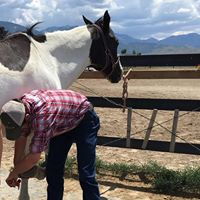Christopher M Dillon
age ~42
from Lutherville, MD
- Also known as:
-
- Chris Dillon
- Cristoph Dillon
- Christopher M Dillion
- Bob Dillon
- Ola M Allen
- Ola L Allen
Christopher Dillon Phones & Addresses
- Lutherville, MD
- 29 Dunkirk Ave, Govans, MD 21212
- Baltimore, MD
- San Francisco, CA
- Pleasant Ridge, MI
- Mendham, NJ
- Huntington Beach, CA
- 187 Lower Ter, San Francisco, CA 94114
Resumes

Lecturer
view sourceLocation:
Bel Air, MD
Industry:
Higher Education
Work:
Towson University 2003 - 2010
Adjunct Professor
Towson University 2003 - 2010
Lecturer
Independent Studio Group 2003 - 2010
Coordinator
Adjunct Professor
Towson University 2003 - 2010
Lecturer
Independent Studio Group 2003 - 2010
Coordinator
Education:
The Johns Hopkins University 1993 - 2002
Oberlin College 1992 - 1993
Oberlin College 1992 - 1993
Skills:
Research
Teaching
Piano Performance
Piano Teaching
Music Theory
Ear Training
Public Speaking
Business Strategy
Higher Education
Coaching
Microsoft Office
Leadership
Event Planning
Event Management
Management
Piano
Piano Education
Music
Teaching
Piano Performance
Piano Teaching
Music Theory
Ear Training
Public Speaking
Business Strategy
Higher Education
Coaching
Microsoft Office
Leadership
Event Planning
Event Management
Management
Piano
Piano Education
Music
Interests:
Theory Teaching
Piano Teaching
Performance
Helping Students
Hearing New Music
Piano Teaching
Performance
Helping Students
Hearing New Music
Languages:
English
Spanish
German
French
Spanish
German
French

Christopher Dillon
view sourceLocation:
10 Center St, Washington Grove, MD 20880
Industry:
Research
Work:
NIH
postbacc irta
postbacc irta

Christopher Dillon
view source
Christopher Dillon
view sourceLocation:
United States

Christopher Dillon
view sourceLocation:
United States

Christopher Dillon Manchester, CT
view sourceWork:
Quinnipiac University
North Haven, CT
Jun 2012 to May 2013
Physician Assistant Program Hospital of Saint Raphael
New Haven, CT
Nov 2011 to Apr 2012
Physician Assistant Student Hartford Surgical Center
Hartford, CT
Feb 2010 to Apr 2011
Surgical Technician Hartford Surgical Center
Hartford, CT
Feb 2009 to Feb 2010
Operating Room Technician Life Choice Donor Services
Windsor, CT
Oct 2008 to Jan 2009
Procurement Technician National Institute on Drug Abuse
Baltimore, MD
Sep 2006 to Sep 2008
Research Assistant
North Haven, CT
Jun 2012 to May 2013
Physician Assistant Program Hospital of Saint Raphael
New Haven, CT
Nov 2011 to Apr 2012
Physician Assistant Student Hartford Surgical Center
Hartford, CT
Feb 2010 to Apr 2011
Surgical Technician Hartford Surgical Center
Hartford, CT
Feb 2009 to Feb 2010
Operating Room Technician Life Choice Donor Services
Windsor, CT
Oct 2008 to Jan 2009
Procurement Technician National Institute on Drug Abuse
Baltimore, MD
Sep 2006 to Sep 2008
Research Assistant
Education:
Quinnipiac University
May 2011
Master of Health Science University of Vermont
Burlington, VT
Aug 2002 to May 2006
Bachelor of Science in Psychology
May 2011
Master of Health Science University of Vermont
Burlington, VT
Aug 2002 to May 2006
Bachelor of Science in Psychology

Christopher Dillon Oakland, CA
view sourceWork:
Oakland unified school district
Oakland, CA
Jun 2009 to Feb 2013
Custodian/Maintenance
Oakland, CA
Jun 2009 to Feb 2013
Custodian/Maintenance
Education:
Western Career College
Emeryville, CA
2009
certificate in architectural drafting and design
Emeryville, CA
2009
certificate in architectural drafting and design
Lawyers & Attorneys

Christopher David Dillon, Palo Alto CA - Lawyer
view sourceAddress:
Gibson, Dunn & Crutcher LLP
1881 Page Mill Rd, Palo Alto, CA 94304
6508495325 (Office)
1881 Page Mill Rd, Palo Alto, CA 94304
6508495325 (Office)
Licenses:
California - Active 1999
Education:
Boston College Law School
Boston College Law School
Boston College Law School

Christopher L. Dillon - Lawyer
view sourceAddress:
Administrative Law Judge, ODAR
8884504590 (Office)
8884504590 (Office)
Licenses:
Texas - Eligible To Practice In Texas 1995
Specialties:
Administrative Law - 50%
Elder Law - 50%
Elder Law - 50%

Christopher David Dillon, Palo Alto CA - Lawyer
view sourceAddress:
Gibson, Dunn & Crutcher LLP
1881 Page Mill Rd, Palo Alto, CA 94304
6508495325 (Office)
1881 Page Mill Rd, Palo Alto, CA 94304
6508495325 (Office)
Licenses:
New York - Due to reregister within 30 days of birthday 1989
Education:
Boston College Law School
License Records
Christopher P Dillon
License #:
9144 - Expired
Issued Date:
Apr 6, 1991
Expiration Date:
Dec 31, 1991
Type:
Master Technician
Name / Title
Company / Classification
Phones & Addresses
69 Mayo Rd STE 204, Edgewater, MD 21037
President
Eco Power Deck, Inc
591 Redwood Hwy Frontage Rd, Mill Valley, CA 94941
1155 Broadway St, Redwood City, CA 94063
270 Chestnut St, Redwood City, CA 94063
1155 Broadway St, Redwood City, CA 94063
270 Chestnut St, Redwood City, CA 94063
President
Dillon Tax & Accounting Svc
Accountant
Accountant
69 Mayo Rd STE 204, Edgewater, MD 21037
8004366829, 4109560125
8004366829, 4109560125
Principal
Dillon Christopher CPA
Accounting/Auditing/Bookkeeping
Accounting/Auditing/Bookkeeping
69 Mayo Rd, Edgewater, MD 21037
T3 PACKAGING, LLC
VARIO CONCEPTS, INC
TRIANGLE LOGISTICS INC
TRIANGLE PACKAGING INC
Us Patents
-
Dual Action Mechanical Assisted Connector
view source -
US Patent:6971894, Dec 6, 2005
-
Filed:Mar 31, 2004
-
Appl. No.:10/812927
-
Inventors:Christopher J. Dillon - Farmington Hills MI, US
Ping Chen - Farmington Hills MI, US -
Assignee:JST Corporation - Farmington Hills MI
-
International Classification:H01R013/62
-
US Classification:439157, 439347, 439372
-
Abstract:A lever-type electrical connector assembly reduces the connection mating forces required to mate female and male connectors. The connector assembly employs a first connector with cam follower projections, a base housing with guide channels, a slide cam housing including cam grooves and projection guide tracks, and a cover housing pivotally mounted on the base housing, the cover housing having a cover housing projection. As the cover housing is rotated from an open to a closed position, it engages the cover housing projection in the projection guide track. This engagement moves the slide cam housing in the guide channel. As the slide cam housing is moved from an open to a closed position, it engages the cam follower projections in the cam grooves thereby drawing the first connector into the base housing to a connected position.
-
Electrical Connector Assembly
view source -
US Patent:7037130, May 2, 2006
-
Filed:Feb 10, 2004
-
Appl. No.:10/776026
-
Inventors:Christopher Dillon - Dearborn Heights MI, US
-
Assignee:J.S.T. MFG. Co., Ltd.
-
International Classification:H01R 13/627
-
US Classification:439357, 439489
-
Abstract:When a latch element is inserted in an opening of a first connector element, a cantilevered flexible portion of the latch element is retained in and latchingly engaged with the first connector element at a deflectable end portion of the cantilevered flexible portion. When the second connector element is inserted in and mated with the first connector element, the deflectable end portion of the cantilevered flexible portion is deflected in a direction orthogonal to the insertion/mating direction of the second connector element to force the deflectable end portion of the cantilevered flexible portion to move in the direction orthogonal to an insertion/mating direction, so as to release the retention of the latch element with the first connector element, thereby rendering the latch element movable in an insertion direction thereof.
-
Connector Lever Lock
view source -
US Patent:7070438, Jul 4, 2006
-
Filed:Nov 24, 2004
-
Appl. No.:10/995424
-
Inventors:Christopher J. Dillon - Farmington Hills MI, US
-
Assignee:JST Corporation - Farmington Hills MI
-
International Classification:H01R 13/625
-
US Classification:439347, 439372, 439157
-
Abstract:A lever-type connector assembly reduces connection mating forces between connector halves. The assembly employs a first connector with cam follower projections, a base housing with guide channels and a latch member, a slide cam housing including cam grooves and projection guide tracks, and a cover housing pivoting on the base housing, the cover housing having a cover housing projection and release latch. The release latch is fully protected and concealed within the profile of the cover housing. As the cover housing rotates, the cover housing projection engages in projection guide track, thereby moving slide cam housing in a guide channel. As slide cam housing moves from an open to a closed position, it engages cam follower projections in cam grooves thereby drawing first connector into base housing to a connected position while the cover housing release latch engages base housing release latch aperture to provide a secure electrical connection.
-
Electrical Connector Having A Housing Including An Asymmetrical Surface
view source -
US Patent:7300317, Nov 27, 2007
-
Filed:Dec 8, 2005
-
Appl. No.:11/296691
-
Inventors:Christopher J. Dillon - Farmington Hills MI, US
Ping Chen - Farmington Hills MI, US -
Assignee:JST Corporation - Farmington Hills MI
-
International Classification:H01R 13/64
-
US Classification:439678
-
Abstract:The invention relates to a connector device that includes a plurality of terminals of varying heights that extend upwardly from the surface of a circuit board, and a connector housing that defines a receptacle portion. The connector housing includes an asymmetrical surface adapted to receive a plurality of terminals, and each of the plurality of terminals extends through a portion of the asymmetrical surface into the receptacle portion of the connector housing. The asymmetrical surface may include a plurality of substantially parallel vertical sections separated by at least one substantially horizontal section, may be angled relative to the surface of the circuit board, or may be curved relative to the surface of the circuit board. In addition, at least a portion of the asymmetrical surface of the connector housing may protrude over at least a portion of at least one of the terminals extending between the circuit board and the asymmetrical surface. In addition, the invention provides a connector device wherein the asymmetrical surface allows for the reduction of the packaging size of the terminals and a reduction of the size of the terminals.
-
Interconnecting Modular Headers And Header Assemblies Thereof
view source -
US Patent:8079882, Dec 20, 2011
-
Filed:Jul 16, 2008
-
Appl. No.:12/670673
-
Inventors:Matthew Bailey - Redford MI, US
Michael Gonzalez - Lake Orion MI, US
Christopher Dillon - Springfield Township MI, US -
Assignee:Molex Incorporated - Lisle IL
-
International Classification:H01R 9/22
-
US Classification:439717
-
Abstract:Interconnecting modular connectors or headers have flexible tongue and groove structures for forming a variety of header assembly configurations. The interconnecting modular headers can have locking structures in addition to the tongue and groove mating structures for permanently interlocking the modular headers together. The sidewalls of each modular connector can be parallel to each other and disposed at supplementary angles with respect to the rear wall of the housing. The top wall of each modular connector can have a portion wall extending inwardly from each sidewall at an angle of greater than ninety degrees and each portion wall can have an upwardly extending wall that joins the portion walls to a ceiling. The portion walls can join with the upwardly extending walls to form a T-shape corner. The upwardly extending walls can join with the ceiling equally at an angle of greater than ninety degrees.
-
Hydroconversion Processes Employing Multi-Metallic Catalysts And Method For Making Thereof
view source -
US Patent:8173570, May 8, 2012
-
Filed:Oct 28, 2008
-
Appl. No.:12/259467
-
Inventors:Theodorus Ludovicus Michael Maesen - Richmond CA, US
Alexander E. Kuperman - Ornida CA, US
Andrew Rainis - Walnut Creek CA, US
Christopher J. Dillon - Manhattan Beach CA, US -
Assignee:Chevron U.S.A. Inc. - San Ramon CA
-
International Classification:B01J 21/00
B01J 23/00
B01J 25/00
B01J 29/00
B01J 31/00 -
US Classification:502154, 502100, 502150, 502219
-
Abstract:A catalyst precursor composition and methods for making such catalyst precursor are disclosed. The catalyst precursor comprises at least a Promoter metal selected from Group VIII, Group IIB, Group IIA, Group IVA and combinations thereof, at least one Group VIB metal, at least one organic, oxygen-containing ligand, and a cellulose-containing material. Catalysts prepared from the sulfidation of such catalyst precursors are used in the hydroprocessing of hydrocarbon feeds. In one embodiment, the sulfidation is carried out by contacting the catalyst precursor with hydrogen and a sulfur containing compound, wherein the contacting is carried out ex-situ. Catalysts prepared from such catalyst precursors have a fouling rate of less than 8 F. (4. 4 C. ) per 1000 hour.
-
Interlocking Modular Headers And Header Assemblies Thereof
view source -
US Patent:8043127, Oct 25, 2011
-
Filed:Jul 16, 2008
-
Appl. No.:12/670672
-
Inventors:Matthew Bailey - Redford MI, US
Michael Gonzalez - Lake Orion MI, US
Christopher Dillon - Springfield Township MI, US -
Assignee:Molex Incorporated - Lisle IL
-
International Classification:H01R 13/502
-
US Classification:439701
-
Abstract:Interlocking modular connectors or headers Have flexible tongue and groove structures for forming a variety of header assembly configurations. The interlocking modular headers can have locking structures in addition to the tongue and groove mating structures for permanently interlocking the modular headers together. The locking structures can include opposing ramps having locking surfaces that engage each other and prevent sliding disengagement of the modular headers in one direction and the grooves can include stop members to prevent sliding disengagement in the opposite direction. The tongues and grooves can have a dovetail shaped cross-section to allow some freedom of lateral movement between the interlocking modular headers in order for ramps to slide over each other and cause locking surfaces to engage and also to provide some independent flexibility to facilitate placement onto a mounting component and to withstand elevated temperatures.
-
Automotive Lamp Socket
view source -
US Patent:20020093830, Jul 18, 2002
-
Filed:Apr 18, 2001
-
Appl. No.:09/837685
-
Inventors:Michael Alloway - Canton MI, US
Earl Hayes - South Lyon MI, US
Christopher Dillon - Dearborn Heights MI, US
Thomas Rahrig - Woodhaven MI, US -
International Classification:B60Q001/00
-
US Classification:362/539000, 362/226000, 362/267000, 362/538000
-
Abstract:A lamp assembly for use with a vehicle's electrical system, the electrical system including a plurality of terminals each having a wire insulating portion and an end connector portion. A main elastomeric housing includes a socket for receiving a bulb. A front seal encircles an exterior surface of the socket and seals around a periphery of the socket. A first plurality of sealing ridges extend along an open facing side of the main housing, opposite the bulb socket, and within which are received the wire insulating portions of the terminals and the end connector portions of each terminal communicating with the bulb socket upon the terminals being located within the main housing. A back cap matingly aligns over an open facing side of the main housing and includes an opposingly facing side with a second plurality of sealing ridges which align with the first plurality of sealing ridges and to sandwich therebetween the wire insulating portions of the terminals. An inlet seal is seatingly received between aligning recesses defined between the opposingly facing sides of the main housing and the back cap and is located proximate the first and second pluralities of sealing ridges. Wire receiving apertures extend through the seal and into which are inserted the wire insulating portions of the terminals. An ultrasonic welding operation secures the back cap to the main elastomeric housing in a seal-tight manner.
Youtube
Myspace

Christopher Dillon
view sourceLocality:
29 Palms Marine Corps Base, California
Gender:
Male
Birthday:
1948
Flickr
Plaxo

Christopher Dillon
view sourceChicago, Il.

Christopher Dillon
view source
Christopher Dillon
view sourceFinancial Advisor at Smith Barney
Classmates

Christopher Dillon
view sourceSchools:
New Canaan High School New Canaan CT 1938-1942
Community:
David Krippene, Sandra Ash, John Lucente, Marc Brunet, Valerie Avedon, Jessica Mcdonald

Christopher Dillon
view sourceSchools:
Tuscarawas Central Catho High School New Philadelphia OH 2001-2005

Christopher Dillon
view sourceSchools:
Elizabeth Seton High School Bladensburg MD 1988-1992
Community:
J Burke

Christopher Dillon
view sourceSchools:
Canton High School Canton IL 2004-2008
Community:
John Hamilton, Becky Kem

Christopher Dillon
view sourceSchools:
College Misericordia Dallas PA 1985-1989
Community:
Carol Janerich, Peggy Gallagher, Donna Smoak, Mary Craig, Henry Moriarty

Christopher Dillon
view sourceSchools:
Loyola High School New York NY 1979-1983
Community:
Donald Sheehan, Violaine Esnault, Sophia Branger, Angelo Rivera, Adediran Tosin

Christopher Dillon
view sourceSchools:
Stivers High School Dayton OH 1997-2001
Community:
Steve Heill, Deborah Kinsler, Ruby Shelton, Deborah Wallace

Christopher Dillon
view sourceSchools:
Scotch Plains-Fanwood High School Scotch Plains NJ 1975-1979
Community:
Tammy Kiesel, Lnda Reeves
Googleplus

Christopher Dillon
Education:
Canton High School - The Female Body
About:
You have located the correct Christopher.

Christopher Dillon
Work:
Bullets n shit - Guy
Education:
The streets - Killin bitches
Tagline:
I'm on google

Christopher Dillon

Christopher Dillon

Christopher Dillon

Christopher Dillon

Christopher Dillon

Christopher Dillon

Christopher Cadin Dillon
view source
Christopher C. Dillon
view source
Christopher W. Dillon
view source
Christopher Dillon
view source
Christopher Dillon
view source
Christopher Justin Dillon
view source
Christopher N Dillon
view source
Christopher Michael Dillon
view sourceGet Report for Christopher M Dillon from Lutherville, MD, age ~42

















